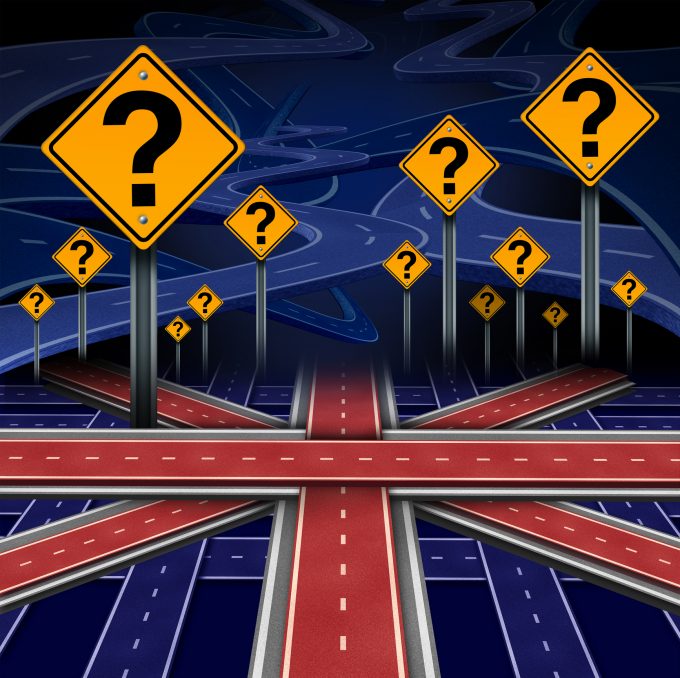Congestion fears as box lines plan to dodge EU carbon tax with UK first-call
The UK appears to have become the hot EU ETS-dodging destination du jour, with many ...
GM: RAISING THE ROOF GGM: IN FULL THROTTLE GZIM: MAERSK BOOST KNIN: READ-ACROSSMAERSK: NOT ENOUGHMAERSK: GUIDANCE UPGRADEZIM: ROLLERCOASTERCAT: HEAVY DUTYMAERSK: CATCHING UP PG: DESTOCKING PATTERNSPG: HEALTH CHECKWTC: THE FALLGXO: DEFENSIVE FWRD: RALLYING ON TAKEOVER TALKODFL: STEADY YIELDVW: NEW MODEL NEEDEDWTC: TAKING PROFIT
GM: RAISING THE ROOF GGM: IN FULL THROTTLE GZIM: MAERSK BOOST KNIN: READ-ACROSSMAERSK: NOT ENOUGHMAERSK: GUIDANCE UPGRADEZIM: ROLLERCOASTERCAT: HEAVY DUTYMAERSK: CATCHING UP PG: DESTOCKING PATTERNSPG: HEALTH CHECKWTC: THE FALLGXO: DEFENSIVE FWRD: RALLYING ON TAKEOVER TALKODFL: STEADY YIELDVW: NEW MODEL NEEDEDWTC: TAKING PROFIT

Brexit-backing MD of Europa Worldwide Andrew Baxter has praised a template for future EU-UK border relationships as negotiators reach agreement on the transition process.
Chief negotiator for the European Union Michel Barnier, in a joint press conference with UK negotiator David Davis, said an agreement had been reached for the UK’s “orderly” withdrawal.
“This is a decisive step, but it is not the end of the road,” said Mr Barnier. “And nothing is agreed until everything is agreed, but this new draft text is certainly a decisive step forward… and a good landing spot.”
The transition, due to run until 31 December 2020, relies on both parties agreeing the complete withdrawal process.
One area that remains a thorn is the Irish border, and Mr Barnier said a backstop solution with Northern Ireland remaining a member of the European Customs Union was “on the table”.
As far as customs issues are concerned, deputy chief executive of the Freight Transport Association James Hookham told The Loadstar the ideal solution would be mutual recognition of EU-UK customs checks.
“We’d like to see inspections done away from the border, for instance an Irish veterinary certificate being accepted by UK customs and vice versa,” said Mr Hookham.
“This would be ideal, as this is how it is done now, but there remains a big argument on regulatory divergence or the UK sticking to EU standards.”
Despite the backstop solution remaining within the legal text of the agreement, Mr Davis said the UK wanted to find an alternative solution.
In Smart Border 2.0, former World Customs Organisation director Lars Karlsson suggested the use of a “smart border” to tackle the issue, which Mr Baxter described as “sensible and positive progress”.
“It allows cross-border movement and trade between Northern Ireland and Ireland, but all principles and recommendations within it can be projected on to the wider post-Brexit picture,” said Mr Baxter.
“In essence, it puts forward a proposal for what is known elsewhere in the world as a ‘smart border’, where customs and other border practices keep the border open.”
Smart borders utilise technology, risk management, domestic and international cooperation, as well as international standards, to create secure and low-friction borders. The systems separate customs flows, dependent on type of goods and associated risk, so they can be managed differently.
“It suggests hauliers make a submission to customs before arriving at the border, and by arrival, the driver gets a text saying whether they are free to proceed or not,” said Mr Baxter.
“This would involve entering a simplified entry before crossing the border and a post-import supplementary declaration would be carried out retrospectively.”
Mr Baxter said that in “99.9%” of cases the driver would be free to go, and described the two-step process as “hugely smooth” compared with existing customs processes.
While also offering praise for Smart Border 2.0, Mr Hookham said it did not show anything that was not already known, adding that the timeframe involved remained a “problem”.
“One aspect of the report that is good to see is the involvement of the EU – it shows interest and is helpful in presenting something other than Brexit being solely a UK problem,” said Mr Hookham.
“But I can’t see the system proposed by Mr Karlsson being up and running within the transition timeframe without an inordinate amount of investment.”
Comment on this article